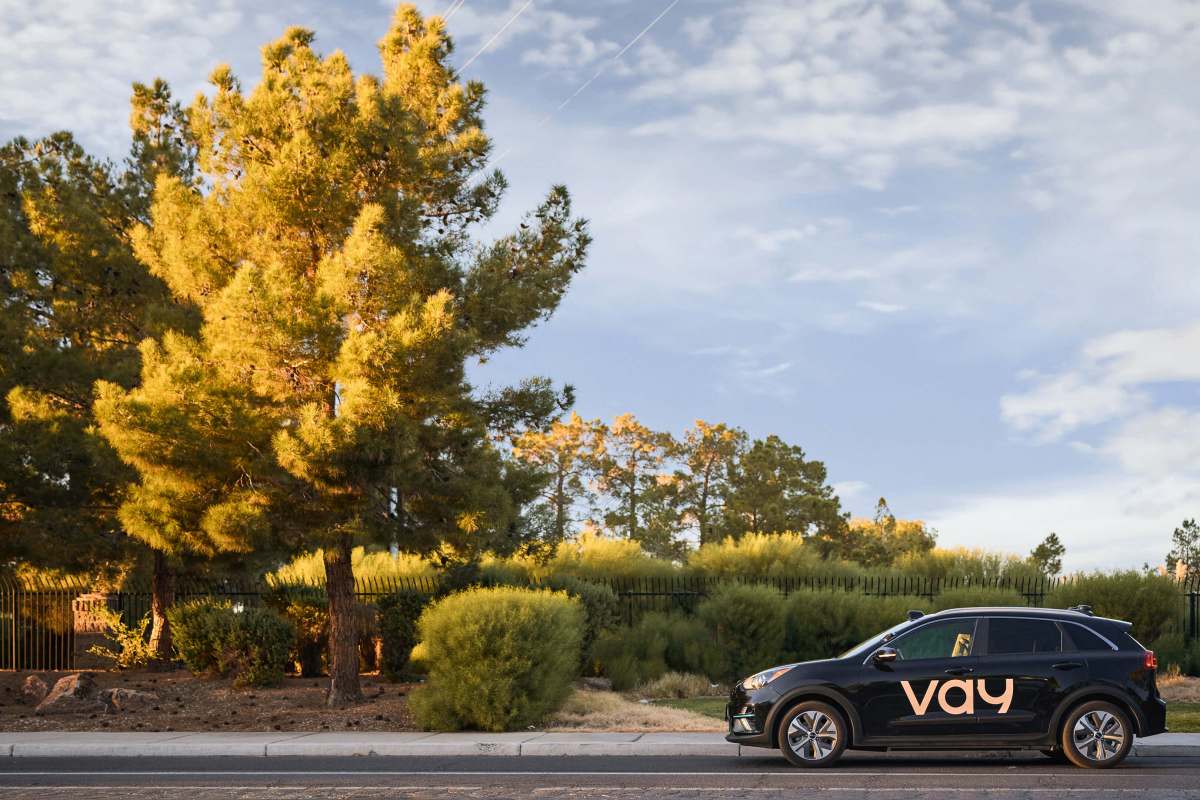The new business-to-business division is a bet on what co-founder and CEO Thomas von der Ohe thinks is the future of mobility.
© 2024 TechCrunch. All rights reserved. For personal use only.
Vay, a startup that has put a teleoperated twist to car-sharing in Berlin and Las Vegas, is expanding into commercial and business-to-business services buoyed by recent deals with French automaker Peugeot and Belgium-based Poppy.
Vay isn’t a traditional ride-hailing or car-sharing startup, nor does it operate a robotaxi service. And yet, when customers in Las Vegas or Berlin open the Vay app and hail a car, it arrives without a human behind the wheel.
The Berlin-based startup, which was founded in 2019 and has raised about $110 million to date, has developed teleoperations technology that allows employees sitting in an office to pilot empty vehicles to customers. Once the Vay vehicle arrives, the customer hops in and takes over manual control of the car. Customers drive themselves to their destination. Once they’re finished, the teleops driver pilots the vehicle back.
The new business-to-business division is a bet on what co-founder and CEO Thomas von der Ohe thinks is the future of mobility, he told TechCrunch.
“This is what we predict the future of vehicles will look like,” he said. “You just click a button, you get a van or truck or private vehicle to be teledrive-enabled.”
Von der Ohe said that tele-driving technology is so inexpensive from a capital expenditure perspective, he expects that within five to 10 years, any kind of vehicle that runs from the production line will be teleop-enabled, leveraging the ADAS cameras that are already on the vehicle.
It’s here where Vay hopes to carve out deals and market share. The expansion, led by a task force within the firm’s business development team headed up by Chief Business Officer Justin Spratt, aims to be an AWS of sorts for vehicle fleets. That means Vay would supply the teledriving platform for automakers, car share and rental firms, trucking, luxury / telechauffeuring, and delivery and logistics.
The company has already landed two deals. Earlier this year, Vay announced a partnership with Peugeot to test how an E-308 electric van equipped with tele-driving technology could work. Vay is also exploring use cases for the luxury OEM market. The company says this could include telechauffeuring, where vehicle owners can drive themselves to a social event before being comfortably teledriven home.
Vay also landed a deal with Belgium car-sharing company Poppy to test its teleops technology on its fleet. Von der Ohe said other high-profile customers will be announced soon.
A Vay teleoperator in Las Vegas.Image Credits: Kirsten Korosec
From von der Ohe’s perspective, Vay is creating a new mobility category designed for customers who want flexibility and to avoid the hassle of parking a vehicle. That is a niche group, but von der Ohe contends the startup has some traction.
Vay launched in Las Vegas earlier this year with two Kia Niro EVs. Since then, the startup has expanded to 15 vehicles and expanded its operating area to encompass about 25% of Las Vegas, including parts of North Las Vegas and Spring Hill. Vay has completed 3,000 trips in Vegas since launching in January 2024 and is growing 20% month over month. The results have been positive enough that Vay is now investing in a larger fleet with plans to have 100 vehicles in the next six to nine months, von der Ohe said.
Price has been a key driver of those results. Von der Ohe said Vay guarantees that its driverless car-sharing trips are half the price of a ride-hailing trip offered by Uber and Lyft. That price guarantee has helped it attract repeat customers — many of whom are local residents and commuters. That competitive pricing has cut into its bottom line, however.
Von der Ohe said the company can reach profitability by scaling — and notably without having thousands of vehicles in its fleet. He also said they can tweak the price to reach profitability faster, although for now that is not the plan.
“We’d love to keep that claim of 50% cheaper than ride hailing, but we wouldn’t have to if we decide to focus everything on profitability,” he said. “We believe that just 20% or 30% cheaper than the next best alternative would be sufficient value proposition to the customer.”

Leave a Reply